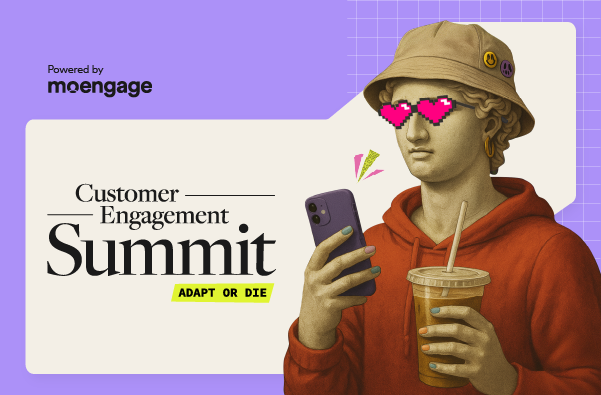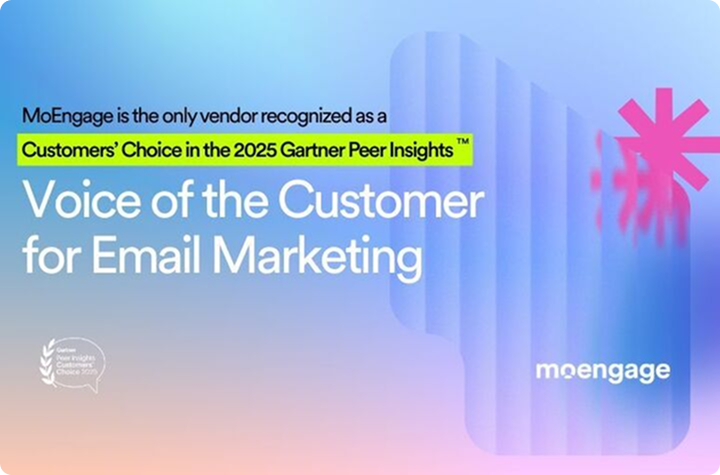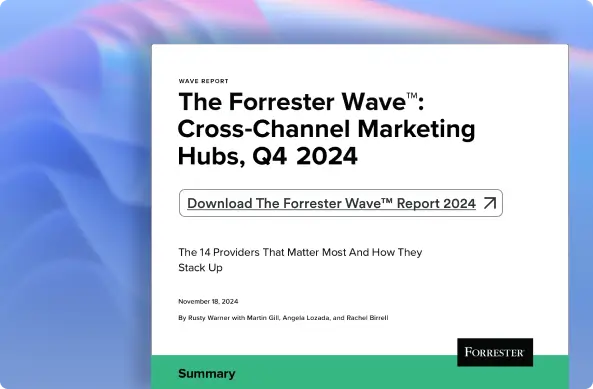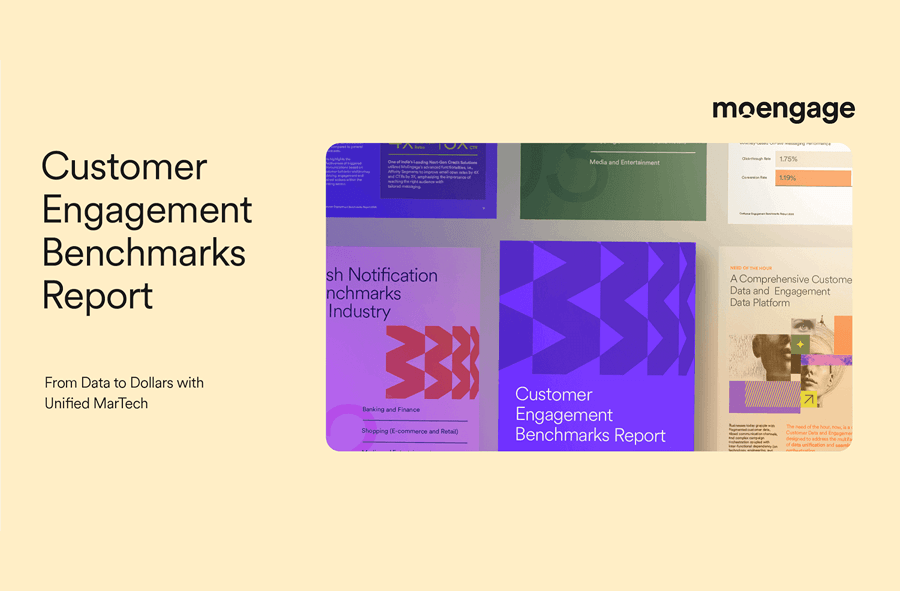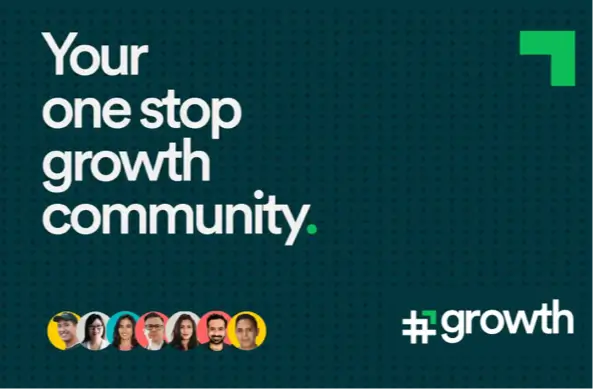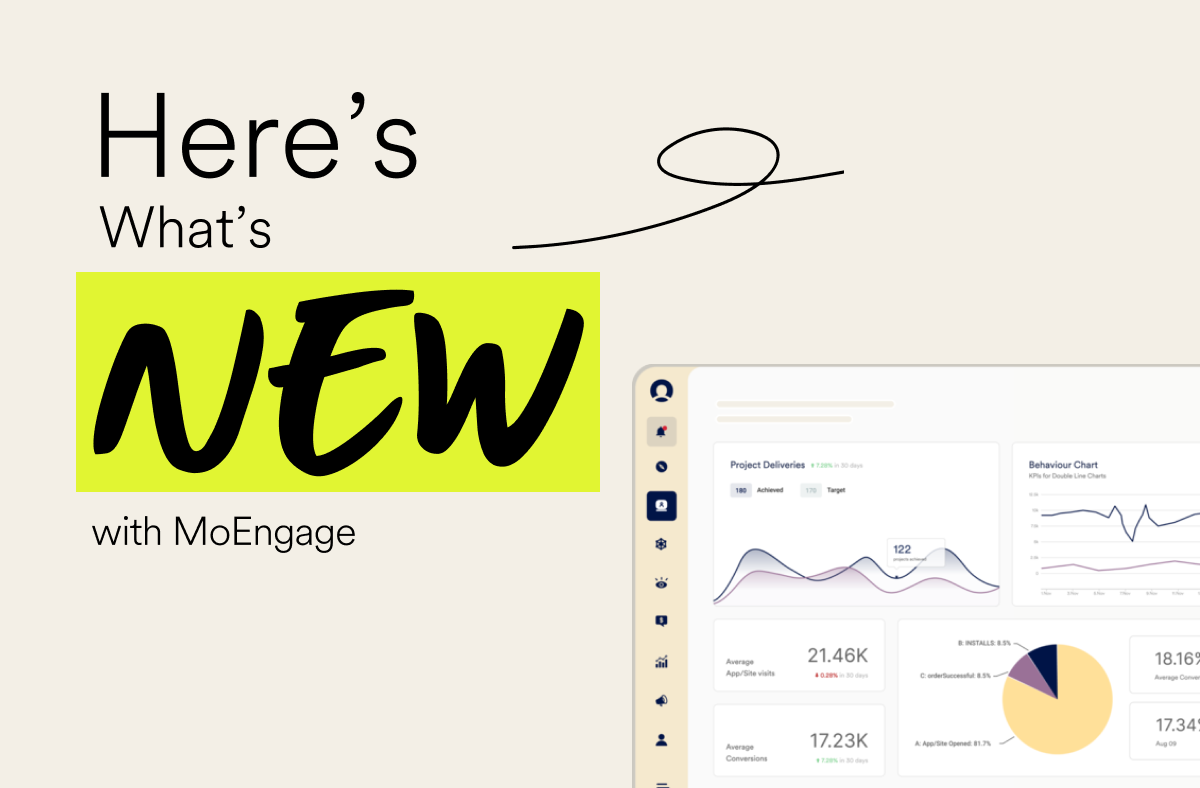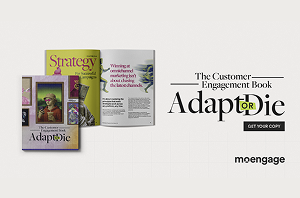Ecommerce Customer Experience: 7 Actionable Tips for Success
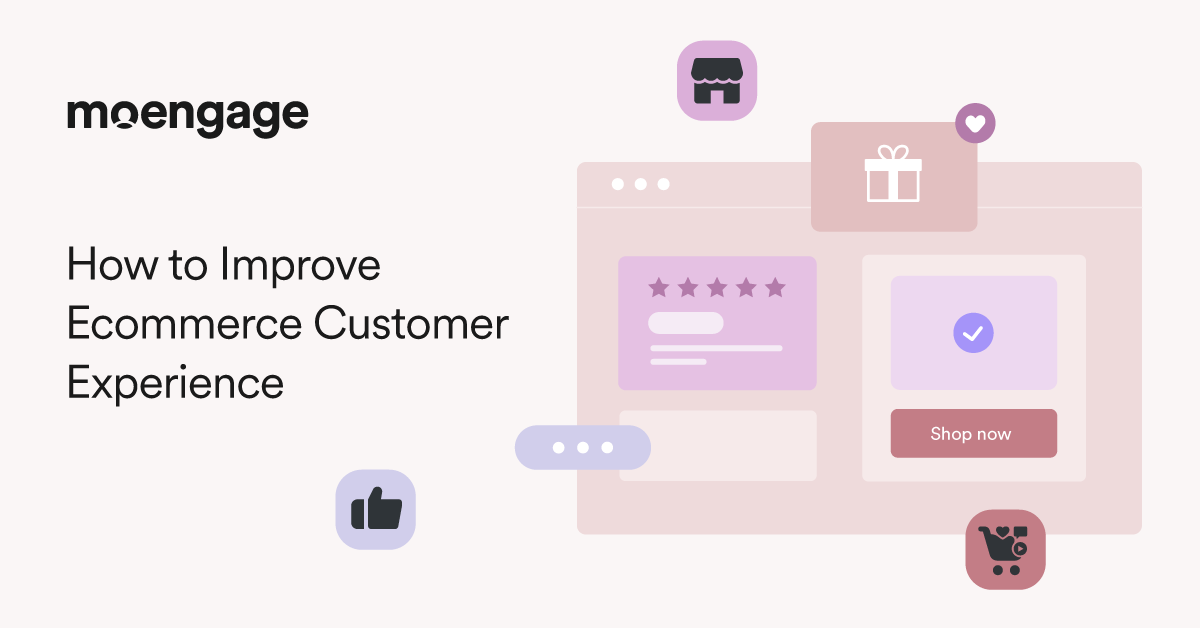
Reading Time: 12 minutes
Your customer can tell a lot about your brand just by the way you interact with them. The way a page loads, the tone of an email, the small delay between adding something to the cart and seeing it appear — it all says something. That’s really what Ecommerce customer experience is about.
Most of the time, the team behind the online store doesn’t see these moments. They look at dashboards and reports, which usually say things are fine.
But the customer’s version is quieter.
A personalized customer experience feels steady. The site behaves as expected, the tone feels right, and the service shows up when needed. They just leave when something feels off, and there’s rarely a message explaining why.
Having said that, this blog explores everything about Ecommerce customer experience, including why it matters, and how to improve it in real ways that actually help retain customers.
What is the Ecommerce Customer Experience?
An Ecommerce customer experience refers to everything a customer feels and encounters while interacting with an online store. It includes all interactions, from browsing and buying to delivery, support, and even returns. Overall, it’s the sum of every touchpoint that shapes how customers see your brand.
The importance of customer experience in Ecommerce
Customer experience in an Ecommerce platform shapes more than just a single sale. It quietly decides whether customers come back or drift toward another store.
Pages that load reliably, clear product descriptions, and support that feels human usually make a bigger difference than most teams realize. Most customers don’t complain about minor frustrations. They just shop elsewhere.
When an experience feels smooth, customers stick around longer. It builds a kind of quiet trust that keeps them returning without needing constant promotions or incentives. Brands that notice small irritations and fix them quickly usually see customer loyalty grow naturally, along with word of mouth.
Most importantly, this isn’t a one-time effort. Expectations shift constantly, and what worked yesterday may feel outdated today. Companies that pay attention, adjust, and keep improving how their store feels are the ones that tend to stay in a customer’s mind over time.
Using an Ecommerce Customer Experience Map
An Ecommerce customer experience map is a way to lay out everything a customer goes through when interacting with your online store. It starts from when they first hear about you, and moves through browsing, buying, delivery, and returns, laying out the Ecommerce customer journey.
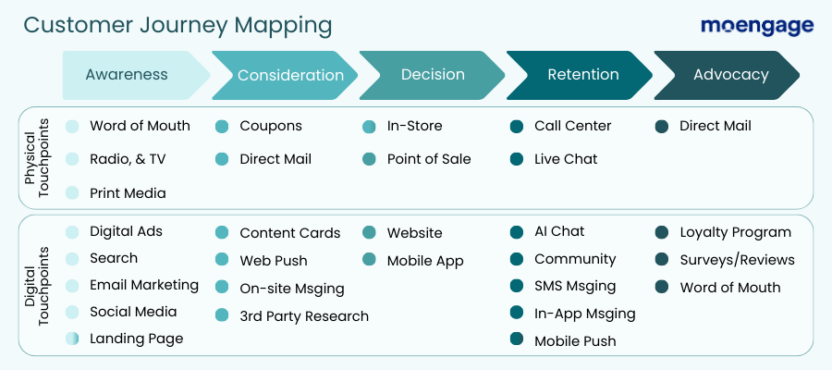
The key is that this map is specific to your store and your customers, not a generic template from the web.
Why it’s useful:
- Shows friction points clearly. If a lot of customers are leaving their carts at a certain stage, the map points to exactly where that happens.
- Highlights small fixes that matter. Something as simple as clearer instructions or a slightly faster checkout can improve the customer experience more than big, complicated changes.
- Gives teams a shared view. Marketing, design, support—they all look at the same customer journey and see the same sticking points.
- Supports ongoing tweaks. Customer habits change. By updating the Ecommerce customer experience map, you can adjust before small problems turn into bigger ones.
- Focuses on actual experience. It’s less about raw numbers and more about how customers actually feel while visiting your online store.
In practice, a good Ecommerce customer experience map turns guesswork into something visible. You can identify weak spots, prioritize fixes, and notice places where customers might feel overlooked.
Often, the map reveals opportunities that weren’t obvious before. It’s not perfect, and it doesn’t answer every question, but it gives you a place to start and a way to keep refining.
Measuring Ecommerce Customer Experience & ROI
Figuring out how customers really experience your store isn’t just about tracking sales. It’s about noticing patterns, behaviors, and small moments that add up, and seeing how they tie back to your brand.
How to perform Ecommerce customer experience analysis
You want to know what works, what annoys, and what actually keeps customers coming back. For that, you need to:
- Decide what matters: Pick the things that really show how your customers feel. Is it fewer abandoned carts, faster checkout, or better post-purchase follow-up? Choose goals that actually reflect experience, not just vanity numbers.
- Set up dashboards: Put all the engagement metrics in one place. Conversion rates, session times, repeat purchases, support tickets, feedback scores, and so on. It doesn’t have to be perfect, just usable, so you can spot trends without digging through endless spreadsheets.
- Listen to the customers: Surveys, chats, reviews. Numbers tell one story, words tell another. Most frustrations hide where the data doesn’t show.
- Look at every touchpoint: Track the whole journey. Where do customers hesitate? Where do they drop off? Which channel or device gives trouble? That’s where insights hide.
- Check the returns: See how changes in experience actually affect revenue, customer retention, and repeat orders. Sometimes a small tweak pays off in ways you didn’t expect.
- Keep going: Customer behavior shifts fast. What worked last month may feel slow today. Keep measuring, adjusting, and iterating.
Doing this turns assumptions into real, actionable insight. You start seeing the weak spots, noticing little wins, and making changes that actually matter, without just guessing what the customer wants.
5 key Ecommerce customer experience metrics to prioritize
Measuring the right things matters more than measuring everything. For Ecommerce, some customer engagement metrics show exactly where customers get stuck, what frustrates them, and which steps impact revenue the most.
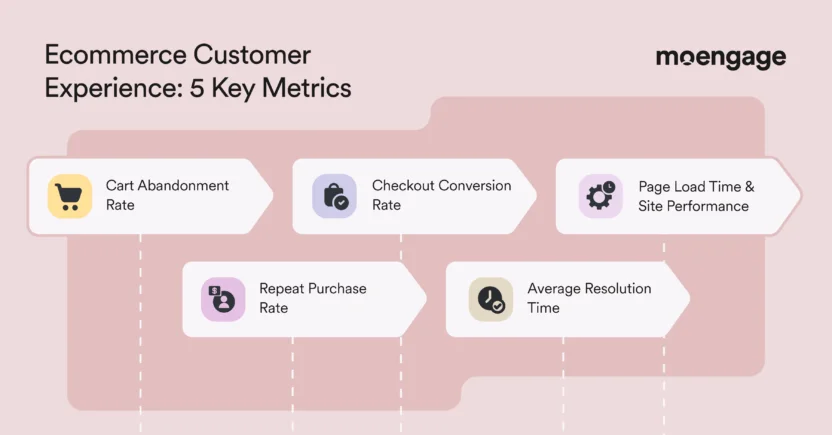
- Cart Abandonment Rate: This metric analyzes how many customers put items in their cart but don’t finish the purchase. A high rate often signals friction in checkout. Maybe the shipping costs come as a surprise, forms are too long, or payment options feel limited. Keeping an eye on this metric helps spot problems that are literally costing sales.
- Checkout Conversion Rate: This metric shows the percentage of visitors who complete their purchase. If the number is low, the checkout may have confusing fields, glitches, or last-minute surprises that scare customers off. Even small tweaks, like simplifying a form or fixing a slow button, can make a real difference in revenue.
- Page Load Time and Site Performance: Slow pages push customers away quickly. Bounce rates tend to climb when product or category pages drag. Usually, faster pages mean more visitors get to checkout, and fewer abandon carts along the way.
- Repeat Purchase Rate: This metric tracks how many customers come back for another order, revealing loyalty and trust. Low repeat purchases can point to delivery delays, poor follow-up, or weak engagement. A higher repeat rate usually signals that the shopping experience was smooth and satisfying enough for customers to return.
- Average Resolution Time: This metric measures the time taken to solve a customer support ticket. Tickets about missing order tracking numbers, late deliveries, or returns show friction points. Fast and helpful responses often turn a frustrating moment into a reason for customers to stay loyal. To calculate this metric, divide the total time taken to solve all tickets by the total number of tickets resolved.
Focusing on these Ecommerce customer experience metrics gives your team a clearer picture of what drives retention. It makes the customer experience vision concrete and measurable, instead of guessing and hoping for the best.
How to Improve the Ecommerce Customer Experience
Improving customer experience in Ecommerce is rarely about one big change. Most of the time, it is the small things that add up. These are the moments that make a customer pause, smile, or quietly leave.
When a customer lands on your site, it is essential to notice how they feel. Are they confident, curious, or confused? Do they move through checkout smoothly, or do they hesitate and abandon their cart? These questions should guide almost every change you make.
1. Map the customer journey carefully
Do you really know every step your customers take, from landing on your site, browsing products, checking out, to delivery and returns?
Mapping the customer journey is more than drawing a diagram. It helps you see where customers hesitate, get confused, or drop off. To do this, you can:
- Observe real customers navigating your site and note where they struggle
- Identify touchpoints where friction or delays occur
- Highlight areas where small improvements could create delight
Walking in your customers’ shoes reveals pain points you might otherwise miss. This gives clarity so that your decisions are based on observation and data, rather than assumptions.
2. Personalize every interaction
Customers notice when a brand “gets them.” Ecommerce personalization doesn’t need to be complicated. Even small, thoughtful touches make a big difference: suggesting recently viewed items, recommending complementary products, or tailoring promotions based on actual purchase history.
Think about it: would your customers appreciate random suggestions, or something that actually fits their needs? When done right, personalization builds trust, encourages repeat visits, and makes your site feel alive.
3. Simplify checkout and payment
Friction at checkout is a common reason for abandoned carts. Lengthy forms, hidden shipping costs, or confusing payment options push customers away. Simplifying the process can turn hesitant shoppers into confident buyers.
Some practical steps include:
- Reducing the number of steps to complete a purchase
- Offering multiple familiar payment options
- Pre-filling forms or securely saving customer details
- Displaying shipping costs and delivery times clearly upfront
Even small improvements in checkout can make a big difference in conversion rates.
4. Optimize site performance and mobile experience
Slow-loading pages frustrate visitors instantly. Everyone has left a product page that didn’t load quickly, and your customers are no different. Regularly testing site performance, navigation, and mobile usability ensures that browsing remains smooth and enjoyable.
Fast, responsive pages not only reduce bounce rates but also communicate reliability and professionalism.
5. Provide proactive and human customer support
Customer support shouldn’t exist just for complaints. Slow, robotic responses leave a negative impression, while timely, thoughtful interactions can create loyalty.
Consider whether customers can reach you when and where they need help. Multi-channel support via live chat, email, or social media gives flexibility, but personal attention is what leaves a lasting mark. Responding to small details in a thoughtful way can turn ordinary service into an experience customers remember.
6. Collect feedback and act on it
Feedback is only valuable if you take action based on it. Surveys, reviews, and post-purchase forms show frustrations and opportunities that numbers alone cannot.
Customers notice when their input leads to improvements. Even small changes, like clarifying a product description or fixing recurring checkout issues, remove friction and build trust. Feedback should be collected continuously rather than as a one-time effort. It helps the experience evolve over time.
7. Create consistency across channels
Customers move between mobile, desktop, apps, and social media constantly. Every interaction should feel like the same store. Inconsistent design, messaging, or checkout flows frustrate and confuse.
A consistent experience:
- Reduces confusion and frustration
- Builds trust and reliability
- Makes the journey seamless across platforms
Ask yourself: if a customer switches from mobile to desktop, does it feel like a coherent journey to them, or are they entering a different site? Aligning the experience across channels ensures your brand feels reliable and professional at every touchpoint.
3 Best Ecommerce Customer Experience Platforms That Drive Retention
In Ecommerce, delivering a strong customer experience can make a real difference. The right Ecommerce customer experience platform helps brands engage customers effectively, build loyalty, and drive growth. Here are three platforms that stand out, each offering features to enhance Ecommerce interactions.
1. MoEngage
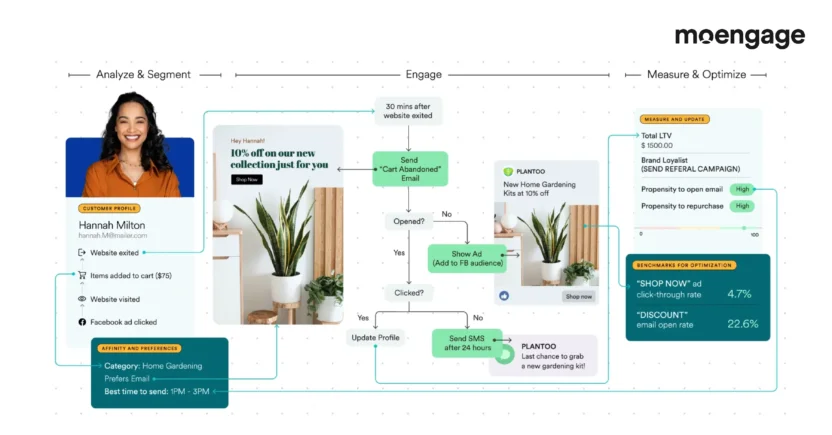
MoEngage is a cross-channel customer engagement platform that focuses on insights and personalization. It helps Ecommerce and retail brands deliver tailored experiences at scale. Over 1,350 global brands, including T-Mobile, Poshmark, and Kayak, rely on MoEngage to engage customers using AI-driven analytics and automation tools across multiple touchpoints.
Best for: Ecommerce brands seeking to implement omnichannel marketing strategies with a focus on personalization and automation.
Features focused on improving Ecommerce customer experience:
- Omnichannel Engagement: Reach customers via email, push notifications, in-app messages, SMS, and more.
- AI-Powered Personalization: Deliver tailored content and recommendations based on customer behavior and preferences.
- Advanced Analytics: Gain insights into customer journeys and campaign performance to optimize customer engagement strategies.
- Journey Orchestration: Plan and automate complex customer journeys across multiple channels to ensure timely, context-aware interactions.
- Behavioral Segmentation: Segment customers based on real-time actions, such as browsing patterns, purchase history, or engagement levels, to create more relevant campaigns.
- Push and In-App Campaigns: Send targeted messages in-app or via push notifications to drive retention, increase repeat purchases, and reduce churn.
Pricing Model: MoEngage offers a tiered pricing model based on Monthly Tracked Users (MTUs). The Growth plan comes at a price that varies based on the selected features and user volume. Larger Ecommerce brands can opt for the Enterprise plan, which includes advanced features, higher limits, and dedicated support with custom pricing available.
2. ActiveCampaign

ActiveCampaign is a customer experience automation platform that combines email marketing, automation, sales automation, and CRM tools. It helps Ecommerce brands automate repetitive tasks and create personalized customer journeys to increase engagement.
Yet, a few drawbacks include a steep learning curve, particularly with the automation builder, and an interface that many users find less intuitive than competitors. While the support team is helpful, some users mention that setup and navigation can be time-consuming, which can slow down smaller teams looking for quick implementation.
Best for: Ecommerce brands looking for an integrated solution that combines email marketing with CRM and sales automation.
Features focused on improving Ecommerce customer experience:
- Customer Journey Mapping: Visualize and automate customer journeys to deliver timely and relevant messages.
- Segmentation and Personalization: Create dynamic segments and deliver personalized content based on customer behavior.
- Sales Automation: Automate sales processes to nurture leads and close deals efficiently.
Pricing Model: ActiveCampaign offers a tiered pricing structure, with plans starting at $15 per month for the Starter plan (billed annually), which supports up to 1,000 contacts. Additional tiers include Plus ($49/month), Pro ($79/month), and Enterprise (custom pricing). Pricing increases based on the number of contacts and features included. Monthly billing is available at higher rates.
3. Omnisend

Omnisend is a marketing automation platform designed for Ecommerce brands. It offers a suite of tools to create personalized email, SMS, and web push campaigns, helping brands engage customers and drive conversions.
However, a few limitations of Omnisend include limited data analytics and design flexibility, which can make it harder to gain deeper insights or create more visually unique campaigns. Several users also mention that the customization options for email templates and personalization features feel restrictive. These gaps can be challenging for brands looking to scale their marketing with more advanced tools.
Best for: Ecommerce brands seeking an integrated solution for multichannel marketing automation.
Features focused on improving Ecommerce customer experience:
- Multichannel Campaigns: Reach customers through email, SMS, web push, and more.
- Pre-built Automation Workflows: Utilize ready-to-use automation templates for common ecommerce scenarios.
- Product Recommendations: Display personalized product suggestions to increase average order value.
Pricing Model: Omnisend offers a free plan with limited features (500 emails per month to 250 contacts). The Standard plan starts at $16 per month for up to 500 contacts, and the Pro plan starts at $59 per month for up to 2,500 contacts. Pricing increases based on the number of contacts and messages sent (email and SMS volume).
Ecommerce Customer Experience Trends to Watch For
Ecommerce is evolving fast, and customer experience is now a key factor in who succeeds and who falls behind. The global Ecommerce market size was estimated at $25.93 trillion in 2023 and is projected to reach $83.26 trillion by 2030, growing at a CAGR of 18.9%.
Staying on top of the trends shaping customer experience is essential for Ecommerce brands that want to remain competitive. Here are the key shifts shaping how customers shop today.
1. AI-Driven Hyper-Personalization
Customers don’t want generic experiences. According to McKinsey, about 71% of customers expect personalized interactions, and 76% get frustrated when brands fail to deliver. Real personalization now means looking at browsing behavior, past purchases, and preferences to offer exactly what each customer needs at the right moment. It’s no longer just product recommendations.
Some brands are creating “segment-of-one” journeys where every shopper gets their own path. The payoff is higher conversions, stronger loyalty, and customers who actually feel understood.
2. Conversational Commerce and AI Chatbots
Voice shopping and AI chatbots are becoming standard. Around 35% of Americans own smart speakers, and voice technology is expected to hit $50 billion by 2029.
Modern AI assistants do more than answer questions. They guide product discovery, handle returns, recover abandoned carts, and even complete purchases. They are available all the time and can handle many conversations at once. Customers get instant help. Ecommerce brands get scalable support without sacrificing quality. It’s a win-win situation.
3. Immersive AR and VR Shopping
One of the biggest limitations of online shopping is that customers cannot touch or try products. AR and VR are changing that.
The AR Ecommerce market is growing from $5.8 billion in 2024 to $38.5 billion by 2030. Virtual try-ons let shoppers see how clothes or makeup look, and furniture apps show how a sofa fits in a living room.
These tools increase confidence, speed up decisions, and reduce returns. They also make shopping more engaging, something customers enjoy rather than just completing.
4. Seamless Omnichannel Experiences
Shoppers move between phones, laptops, apps, and stores without thinking about channels. They expect the same experience to work everywhere. Browsing on mobile, checking reviews on a laptop, buying in-store, it should all feel connected, leading to an omnichannel customer experience.
The challenge is that touchpoints keep multiplying. Online stores that manage this well see happier customers and better loyalty. It takes technology and team alignment, but there is no other way.
5. Loyalty Programs That Build Real Connections
Loyalty programs today go beyond points or discounts. The best programs create emotional connections through personalized perks, exclusive access, early releases, and tiered rewards that grow with engagement.
Customers who feel valued return, share, and engage more. For Ecommerce brands, the benefits include recurring revenue, higher retention, and more upsell opportunities. Combine loyalty with subscriptions, and customers stick around longer. Reward loyalty, and it often comes back in return.
Delivering Exceptional Ecommerce Customer Experiences: Conclusion
A great Ecommerce customer experience comes from understanding your customers’ needs, anticipating what matters to them, and making every interaction feel natural and helpful. With MoEngage, you can design personalized journeys, track behavior across channels, and continuously improve the way customers engage with your Ecommerce brand.
Book a demo and see how a platform like this turns insights into actions and helps make the customer experience on your Ecommerce platform feel seamless and thoughtful.


